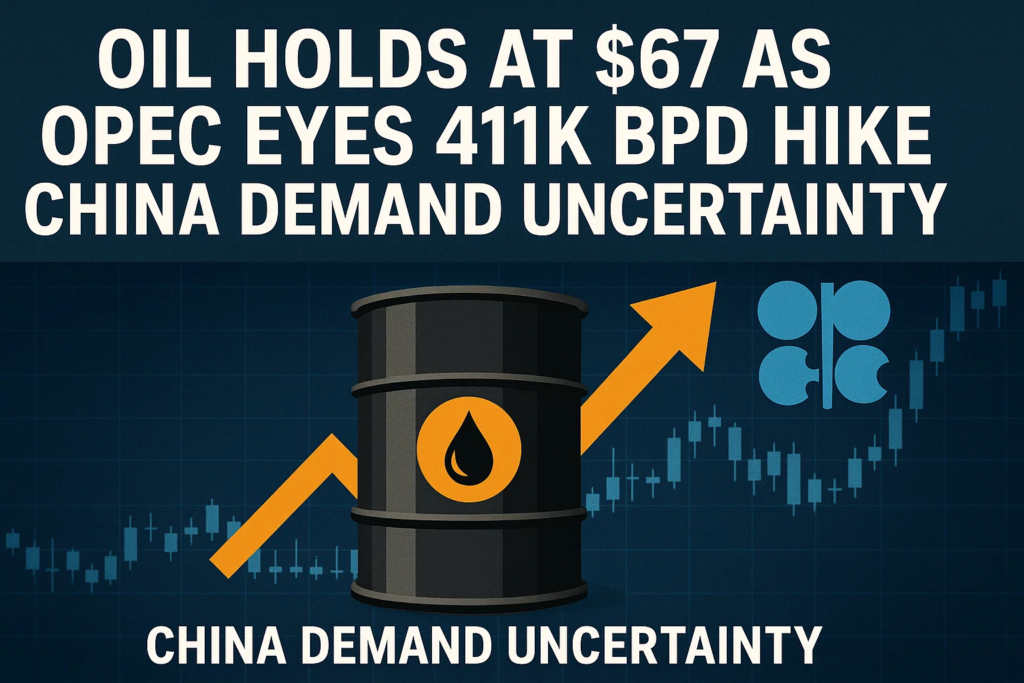Oil prices held firm on Monday as easing geopolitical tensions in the Middle East counterbalanced lingering concerns over global demand. Brent crude futures were steady at $67.76 per barrel as of 09:18 GMT, ahead of the August contract’s expiry, while the September contract edged up 17 cents to $66.97. U.S. West Texas Intermediate (WTI) crude rose by 0.1% to $65.61 per barrel.
Earlier this month, prices spiked above $80 following a 12-day conflict that began with Israel striking Iranian nuclear facilities on June 13. However, the ceasefire has returned the market to a range-bound environment, with Brent and WTI set for their second consecutive monthly gains exceeding 5%, despite recording their largest weekly losses since March 2023 last week.
“The market is back in a holding pattern until new growth signals or supply disruptions emerge,” said Giovanni Staunovo, UBS analyst.
OPEC+ Considers 411K Bpd Output Increase
Market attention is now turning to the upcoming OPEC+ meeting scheduled for July 6, with four sources indicating the group is poised to increase output by 411,000 barrels per day (bpd) in August, continuing the gradual supply hikes seen in May, June, and July.
Key points:
- OPEC oil output rose in May, but increases were limited by quota discipline.
- Saudi Arabia and the UAE made smaller-than-allowed production increases.
- Additional August output could pressure prices if global inventories swell.
“If OPEC+ proceeds with another supply boost, rising inventories across OECD nations could cap prices,” said Tamas Varga, PVM Associates analyst.
Despite the planned increases, Staunovo noted that market tightness persists due to lower-than-expected production gains and stable OPEC+ exports, which could help prevent a steep price decline.
China Demand Uncertainty Weighs on Market
While supply factors shape the market’s near-term outlook, concerns over global demand, particularly from China, the world’s largest crude importer, continue to cap oil’s upside potential.
“Uncertainty around global growth remains a limiting factor for oil prices,” said Priyanka Sachdeva, senior market analyst at Phillip Nova.
Additional factors influencing the market:
- Slower Chinese economic activity and import demand.
- Global economic concerns amid shifting monetary policies.
- The potential for renewed volatility should supply disruptions reemerge.
Overall, oil markets are positioned between cautious optimism on supply management by OPEC+ and the persistent drag of uncertain demand growth, suggesting oil may remain range-bound around $65-$70 until decisive macroeconomic or geopolitical catalysts materialize.


